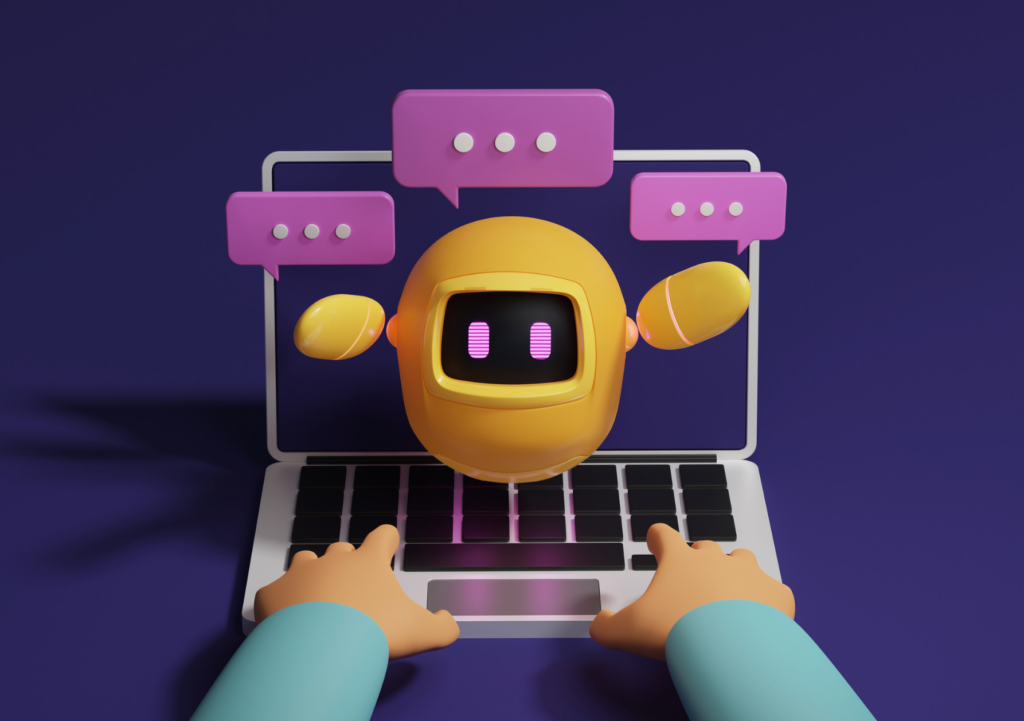AFFILIATE MARKETING
11 Powerful Generative AI Use Cases For Entrepreneurs To Scale in 2023

Exploring generative AI use cases can unlock a world of opportunities for entrepreneurs. This article will dive into these applications, offering practical examples and highlighting innovative AI companies leading the charge in this exciting field.
You may be surprised by how useful these generative AI use cases can be for businesses. From customer support to content creation to cybersecurity, there’s sure to be a use case that works for you.
11 Powerful Generative AI Use Cases For Entrepreneurs
These 11 generative AI use cases can help to skyrocket your business at a fraction of the price. Choose and try the options that best meet your business needs, and start reaping the rewards.
1. Content Creation and Brainstorming
As a business owner or side hustler, you’re constantly in need of fresh, engaging content. Generative AI programs like Jasper fully meet this need. It’s a tool that uses advanced AI models to create content on demand – whether it’s blog posts, social media updates, or even brainstorming ideas for your next marketing campaign.
Here’s how you can use it:
- Blog title generation: Use generative AI to brainstorm captivating titles for your blog posts. With just a few keywords or topic ideas, the AI can come up with a list of potential titles that will attract readers.
- Email campaign creation: Leverage generative AI to craft engaging email campaigns. From subject lines to body content, the AI can help you draft emails that resonate with your audience and drive conversions.
- Keyword integration: Generative AI can seamlessly integrate specific keywords into your content, helping improve SEO ranking and visibility without disrupting the flow or quality of your writing.
- Tone adaptation: Need to switch up the tone of your content? Generative AI can rewrite your existing content to better match the desired tone or style for your target audience, whether it’s more formal, casual, or anything in between.
The value of this lies in the ability to produce high-quality content quickly without needing to always rely on human input. This not only saves time but also allows for consistency in your content.
2. Video Marketing Avatars

Video marketing avatars are AI-generated characters used in marketing videos. They cater content to a specific target audience, replacing the need for real actors.
This approach offers an efficient way to create personalized, engaging content that speaks directly to the viewer’s needs and interests.
They are especially useful for businesses aiming to improve their marketing strategies and create high-performing ads since videos stick out in consumers’ news feeds and are more likely to grab their attention.
Here are some use cases that may be helpful with this video-generation technology:
- Product promotion: Use an AI-driven avatar to promote your product through video content. You can customize its design, voice, and behavior to make it more appealing and effective in delivering the message you want to convey.
- Explainer videos: Create explainer videos using a generative AI avatar for a more engaging way of presenting complex concepts.
- Customer support: Utilize video marketing avatars to provide customer support. AI avatars can be programmed with an FAQ database so that customers can easily get their questions answered.
Our favorite AI movie generator is Synthesia because it automatically creates high-quality videos based on your input, making the process easy for beginners.
We also have a complete review of the best AI movie generator options on the market if you want to try a few different programs out.
3. Visual Art and Graphic Design

AI tools for artists and creative professionals are game changers. These AI tools generate realistic and stylized images, helping you save time on manual design work and focus on your creative vision.
More advanced AI users have gotten results with image generation programs such as Midjourney, while beginners can start experimenting with tools like Jasper Art. You can check out our Jasper Art review to see if this program is for you.
Here are some common use cases for visual art and graphic design:
- Original blog images: Use AI to create images for blog posts. You can quickly generate visuals tailored to your content, helping it stand out from the crowd.
- Logos: Generative AI is great for logo design, as styles and colors are created by algorithms that draw inspiration from existing works of art or company visions.
- Social media graphics: Want to add a special flair to your social media posts? Generative AI can help you create eye-catching graphics that fit any platform.
- Children’s books: Generative AI can also be used to create captivating illustrations for children’s books. You can customize the style and color palette to your liking, making sure that it resonates with your target audience.
In order to get the most out of these visual generative AI tools, you’ll need to learn how to prompt the programs to get the best results possible. So, if you want realistic images, you’ll need to provide the right context so that it can generate what you’re looking for. The same applies when you’re going for a more abstract look or style.
4. Coding

Generative AI is transforming the field of coding, bringing about a new era of code generation. These AI tools and models can automatically produce computer source code from a higher-level representation or design specification, saving developers time and effort.
Here are some key use cases for businesses using generative AI in coding:
- Automating code creation: Generative AI tools can predict explicit code or program structure from multimodal data sources, reducing development time and improving code quality
- Consistency enforcement: Code generation ensures consistency across the codebase by following a set pattern or model
- Post-code optimization: Through post-code generation, optimization processes can be applied to the code, enhancing its performance
This means that you can build apps, automation scripts, or websites quickly and with fewer errors. You don’t need to worry about coding the same thing over and over again with repetitive tasks. The AI can generate code for you with just a few simple commands.
5. Text and Speech Generation

New Generative AI models have made significant strides in Text and Speech Generation. These AI tools, using advanced algorithms, can generate human-like text and transform it into speech that sounds natural.
A product that excels in this area is VEED. It’s one of the best text-to-speech AI programs that leverages generative AI technology to produce high-quality, realistic speech audio from text inputs.
Text and speech generation have a wide range of applications, including but not limited to:
- Video subtitles and transcriptions: Convert video dialogues into written text or generate subtitles directly.
- Voiceovers: Generate voiceovers for videos, presentations, or digital learning materials.
- Podcast transcription: Convert podcast episodes into written articles or blogs.
Speech generation is becoming more natural sounding every day, which means that your customers will feel like they are actually interacting with a real person. This helps to establish trust and reliability at a fraction of the cost of previous methods.
6. Customer Support

In the realm of customer support, generative AI models are truly making their mark.
These AI tools are capable of automating responses to customer queries in a way that is not only timely but also personalized.
By analyzing previous interactions and employing predictive modeling, these AI tools can offer accurate and efficient solutions.
Here are some key use cases for generative AI in customer support:
- Chatbots: Generative AI can power chatbots that provide instant responses to customer queries 24/7, significantly enhancing the customer experience.
- Email automation: Generative AI can be used to automate responses to common customer inquiries via email, ensuring that customers receive prompt replies.
- Call center automation: Generative AI can handle routine calls, freeing up human agents to focus on more complex issues.
The implementation of generative AI in customer support not only improves efficiency but also offers a more personalized user experience. It’s a testament to how AI can transform traditional business operations while improving the consumer journey.
7. Repetitive Task Automation

Automation, fueled by generative AI like ChatGPT, is transforming business operations by making processes more efficient. A key example is the integration of Zapier, a tool automating tasks between web apps, with ChatGPT.
Zapier enables ‘Zaps’ or workflows that automate tasks triggered by specific events, saving time and minimizing errors. Meanwhile, ChatGPT, an OpenAI model, generates human-like text, automating tasks such as drafting emails or powering chatbots.
Here are some additional generative AI use cases for automation to consider:
- Social media scheduling: Upload content to social media platforms, scheduling them to be published at the best times.
- Customer retention automation: Use AI-driven models to regularly analyze customer data and recognize opportunities for outreach or discounts.
- Data collection automation: Gather market intelligence through automated data collection from various sources.
When combined, Zapier and ChatGPT offer businesses immense potential to improve productivity and focus on strategic tasks.
Not tech savvy? Head over to a platform like Fiverr to hire someone to set up your generative AI automation tools.
8. Summarize Lengthy or Complex Information

It can be daunting for entrepreneurs to comb through large amounts of research data and make sense of it all. This is where Generative AI comes in.
From books to PDFs to web pages, these AI tools can summarize long documents in just a few sentences, saving businesses time and effort.
Key use cases include:
- Summarizing reports: Generative AI programs can generate summaries of reports or research papers to quickly gain an understanding of the key points.
- Digesting textual data: Use generative AI to parse through long texts and quickly extract key insights.
- Analyzing customer reviews: Generative AI can be used to analyze customer reviews, providing an overview of the sentiment and popular topics.
With the ability to quickly summarize information with easy-to-understand text generation, generative AI is a great tool for entrepreneurs to gain insight into the topics that they are researching.
Check out the best summary generator tools.
9. Data Mining

Data mining is the process of discovering patterns and knowledge from vast amounts of data. It involves the use of sophisticated data analysis tools to extract useful information from different types of data sets.
Entrepreneurs can use generative AI tools to quickly analyze data sets and produce reports that allow them to track the performance of their business.
Here are some generative AI use cases in data mining & organizing:
- Understanding customer behavior: Generative AI can be used to segment customers according to their spending habits, providing a better understanding of the target customer base.
- Business performance reporting: Generate insightful reports that detail the performance of a business, user sentiment analysis, revenue, sales, expenses, and customer retention.
Generative AI’s ability to work with large data sets saves a lot of time and money on data analysis and data management.
10. Scraping Data

Data scraping is helpful for businesses that need real-world data for research and analysis. Bardeen, a generative AI model, is a leading tool in the field.
A business may need to scrape data in order to:
- Gather market intelligence: Collect information from websites, forums, social media platforms, and other sources to gain insight into the market.
- Extract data from competitors: Monitor competitors’ prices, promotions, product offerings, and more in order to stay competitive and informed.
- Find relevant studies: For those who are doing research, data scraping can help find accurate and helpful academic studies to support your claims.
Bardeen can intelligently scrape websites for relevant information such as prices, stock levels, product descriptions, and other web content.
11. Cybersecurity

One of the biggest generative AI use cases is in the field of cybersecurity. With the increasing threat of cyber-attacks, there is a need for innovative security measures to protect businesses from malicious hackers.
Generative AI beefs up security by:
- Detecting anomalies: Generative AI models can detect changes or inconsistencies in data that could indicate a potential breach.
- Controlling access: Generative AI can be used to control user access to certain networks, systems, or data.
- Virtual Intrusion Detection System (IDS): Generative AI can monitor network traffic and detect suspicious activity in real-time, alerting the relevant authorities of any potential threats.
Generative AI is a powerful tool for cybersecurity that brings powerful protection to entrepreneurs who previously couldn’t afford to invest in pricey IT teams.
Final Thoughts: 11 Powerful Generative AI Use Cases For Entrepreneurs
Generative AI has opened up an array of opportunities for entrepreneurs, enabling them to automate mundane tasks, extract and analyze data, and even enhance cybersecurity.
These applications are just the tip of the iceberg, as the rapidly evolving field of AI continues to revolutionize the way businesses operate and grow.
Harnessing the power of generative AI today could be the key to unlocking unprecedented success in your entrepreneurial journey tomorrow.
So make sure to get involved with these generative AI tools sooner rather than later. Your business will thank you for it.


















